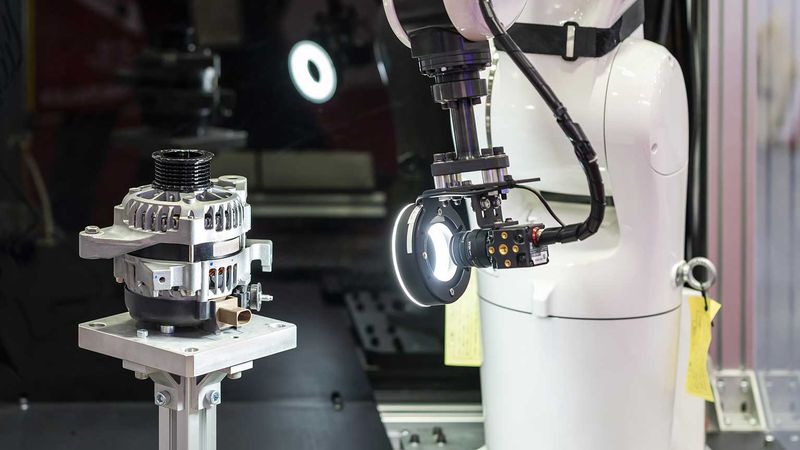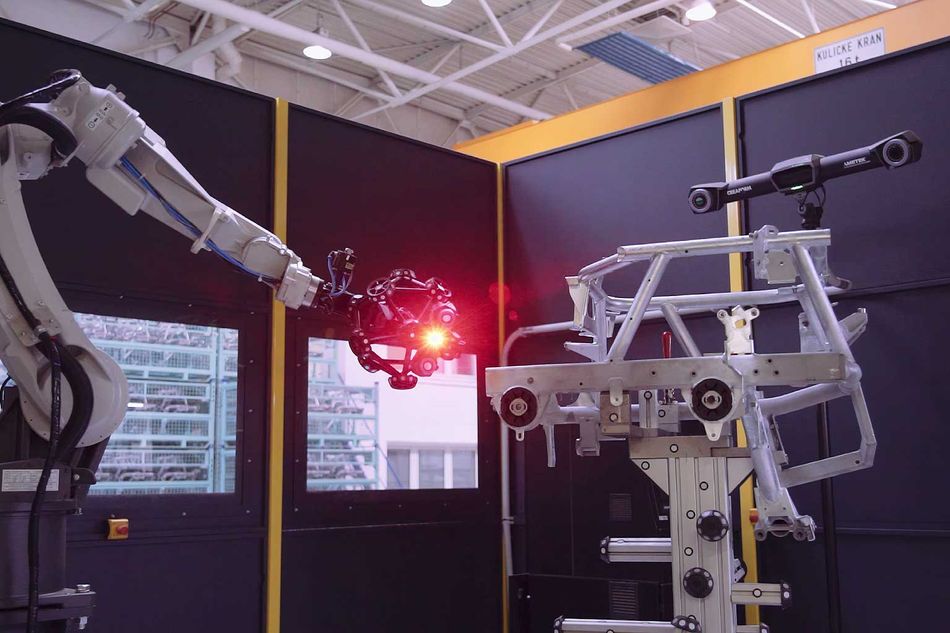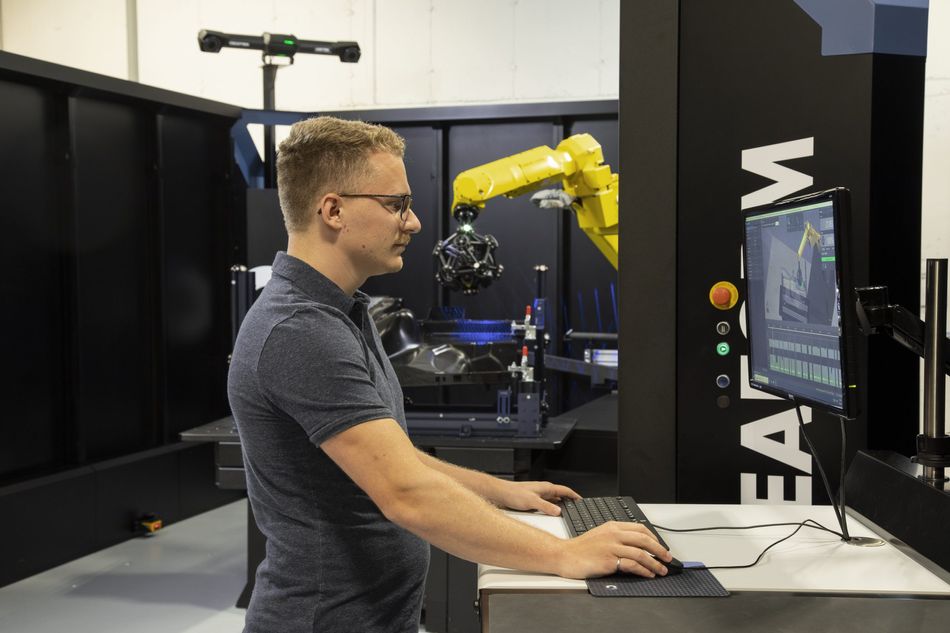3D Measurement Systems: An Alternative Solution To Visual Inspection Systems For Inline Inspection In Smart Factories
Performing bad inspections and delivering defective parts are scenarios that manufacturing companies want to avoid imperatively. Therefore, they must detect anomalies before they become major defects and they must make corrective actions before defective parts are produced and shipped to customers.

How to detect assembly problems earlier, reduce scrap and down time
Pros of V.I.S.
Because of their cameras’ ability to capture images at high speeds, vision inspection systems are extremely fast. The part arrives, and in a split second, all of the cameras take a photo simultaneously, and the part continues on the production line. While the computer software processes the images, the vision system assesses—within a pass/fail function—the quality of the parts. Thus, vision inspection systems enable manufacturing companies to inspect 100% of their parts to ensure that all products are within tolerances and meet the customers’ requirements. Moreover, thanks to their performance optics, vision inspection systems offer excellent accuracy. Setting up the sensors is also relatively simple and requires only a basic calibration.
Cons of V.I.S.
Although vision inspection systems offer excellent accuracy in their field of view, they are not reliable tools to validate dimensional gaps between two entities located in different fields of view. In other words, they lack volumetric accuracy. Because the cameras’ fields of view offer no volumetric accuracy, it is impossible to validate the distance between one hole and another one on the other side of the part. Consequently, it is difficult to inspect 100% of the dimensions or features that must be inspected.
Moreover, a vision inspection system requires the installation of several cameras positioned on a jig or fixture that is dedicated to a specific application, project, or part. This lack of flexibility is restrictive because if certain parameters of the inspected parts change, the position of the cameras may no longer be correct and the jig or fixture may need to be replaced.
Since the automotive industry is moving toward a high mix / low volume production—i.e., car models change every year—car manufacturers must, consequently, be flexible and adapt their production lines. Therefore, a fixed, rigid, permanent, and expensive installation that is suitable for low mix / high volume production, is less appropriate to this new reality.
In response, manufacturing companies have begun to search for solutions to overcome vision systems’ lack of flexibility. For instance, instead of having 4-8-12 fixed cameras on a jig or fixture, they can position one camera on a robot that will move to capture images at 4-8-12 positions. The robot serves as an external positioning tool that expands the camera’s working volume and records different images in the 3D space. This way of doing things boils down to relying on the robot repeatability, which, unfortunately, can provide a false sense of safety.
In reality, temperature variations and vibrations on the production floor, in addition to wear and tear, will cause the robot to drift slightly over time, preventing it from always returning to the same position. Volumetric accuracy will plummet quickly for measurements of <100µm. This pattern is so pernicious that quality control professionals may conclude that a part’s dimensions are incorrect and will not assemble correctly when, in reality, it is the measurement that is faulty.
Finally, because the visual inspection system supplies simplistic information, manufacturing companies do not have the capability to perform geometric dimensioning and tolerancing (GD&T)—i.e., the system does not supply surface profiles or hole positioning.
3d measurement systems

3D measurement systems are also often used for automated quality control and inline inspection in smart factories. The automotive and aerospace industries use this alternative to vision systems for dimensional inspections of mechanical parts in order to improve productivity, increase uptime, and reduce expenses.
Pros of 3d measurement systems
With optical tracking and dynamic referencing, 3D measurement systems offer optimal volumetric accuracy, which is essential to address the issues of dimensional control and surface profile inspection. Moreover, the measurement accuracy is made insensitive to environmental instabilities, such as vibrations and thermal variations that occur constantly on production floors.
Thanks to the power of both optical and blue laser technologies, 3D measurement systems can also generate highly efficient 3D scans on shiny surfaces or on objects with variations in reflectivity—without surface preparation—and measure various part sizes and different surface geometries.
In the context of Industry 4.0, manufacturing companies do not only want to be alerted when there is a problem; they also want to understand the root cause of the problem and know how to correct it. To do this, they need speed, but, above all, they need to have a global understanding of the whole picture. This is why it is important to use tools with high volumetric accuracy and excellent versatility to measure any type of surface without preparation.
Finally, due to their operational simplicity and off-line programming, 3D measurement systems are accessible to all, regardless of their level of expertise or experience in robotics and 3D scanning. New digital twin environment software enables users of all levels to easily and quickly program robot paths and optimize the robotic system’s line of sight, solving programming issues.
Cons of 3d measurement systems
Because it supplies a lot of information that is more useful for understanding a part as a whole, 3D measurement systems are not designed for controlling the presence of specific geometric features, such as hole diameters, welds, or other artefacts. Inspection of definite parts, such as printed-circuit boards (PCB), is also more adapted to vision inspection systems because the complete surface is enclosed within the camera’s field of view.
3D Measurement System: A Better Solution for Smart Factories

Nowadays, manufacturing companies must focus on solving complex and critical problems that will impact their productivity and manufacturing efficiency. Doing so involves knowing that all features are well positioned, that the surface profiles are correct and will ensure a good flush and gap when assembling parts, that the dye must be replaced because of too much wear, and more.
All of these controls are not possible through local analysis alone. Addressing issues of dimensional control, where the nature of problems is generally more complex than the inspection of a hole diameter, is only possible with volumetric controls and with colormaps of the different surfaces. Consequently, 3D measurement systems can make all the difference in the life of manufacturing companies.
Finally, due to the benefits stated above, 3D measurement solutions are very effective tools, reducing the burden of starting a new production, which is a critical moment when a lot of dimensional controls and inspections are required and must be adjusted in a very short lapse of time. Thus, they enable manufacturing companies to save time, effort, and money.